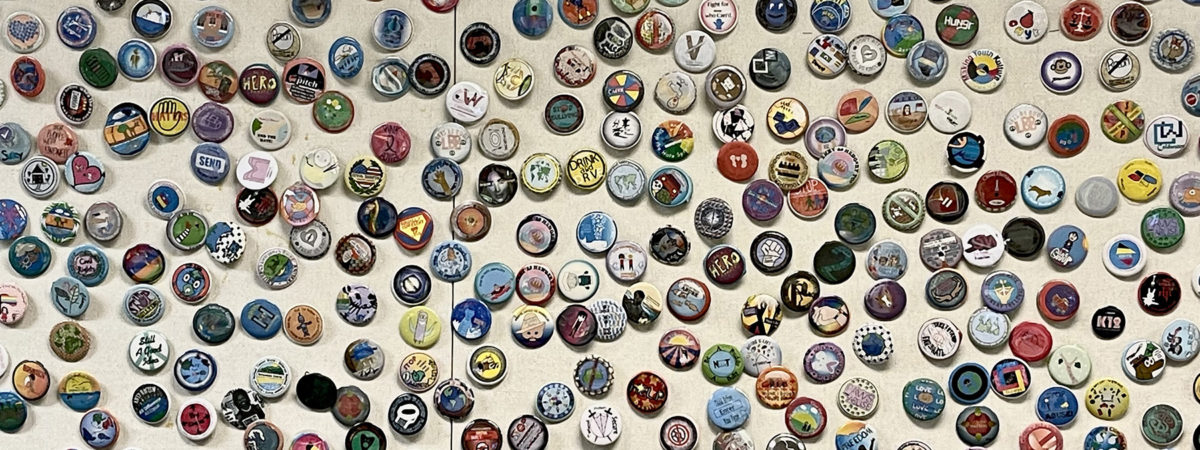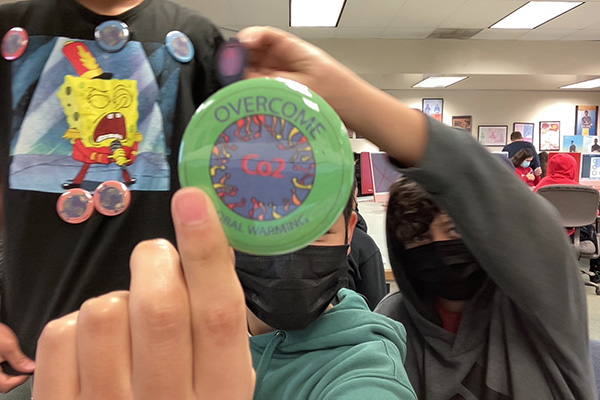
I have experienced how PBL helps develop students’ soft skills, such as collaboration, communication, curation, and problem-solving. The transfer of vital technology skills like digital citizenship and media literacy empowers our students to become media creators. Importantly, as students create, they develop empathy and an authentic connection to their community.

Student-produced digital art photo manipulation
Having help and support from the Ciena Solutions Challenge team at Digital Promise and teachers in the Ciena community was key for me in developing a robust project for my students because I was not designing from scratch. The thoughtful conversations with other teachers around the topic of facilitating learning helped me to develop a stronger essential question. This was important because I felt the essential question would be key for setting the foundation to developing students’ curiosity.

Students share one of their Overcome CO2 buttons
I see their buttons all through school. Friends are wearing them, teachers are wearing them, and they keep the buttons on their backpacks for the whole year. Their buttons become a part of who they are. That’s probably the best part to see how long lasting this project is.
– William Cavada, Mt. Pleasant High School, San Jose, Calif.
What are some ways that teachers can promote students’ voice and agency?
Have students produce something that's physical, whether they’re drawing, creating a sculpture, or writing a script for a podcast. It should be something that’s really tangible for them to hook onto because then they can see what they’re working on and it allows them the creativity to engage in the project. As educators, we want students to internalize their creativity, so having something durable that is physical is key for that voice to be seen and to be heard.
How did you keep your students motivated throughout the Ciena Solutions Challenge?
I think one of the best things about project-based learning and helping students stay motivated is the more in-depth conversations you can have with students if they’re working in groups. You can have a long and thoughtful discussion in the group or one-to-one about what they’re thinking and doing. Listening to them and having them generate ideas–that’s what helps motivate them, that this is their story. This is their idea. This is what they want to do. And so I think the motivation really is that personal one-to-one connection that you as the facilitator have with your student.
– William Cavada, educator at Mt. Pleasant High School, San Jose, Calif.